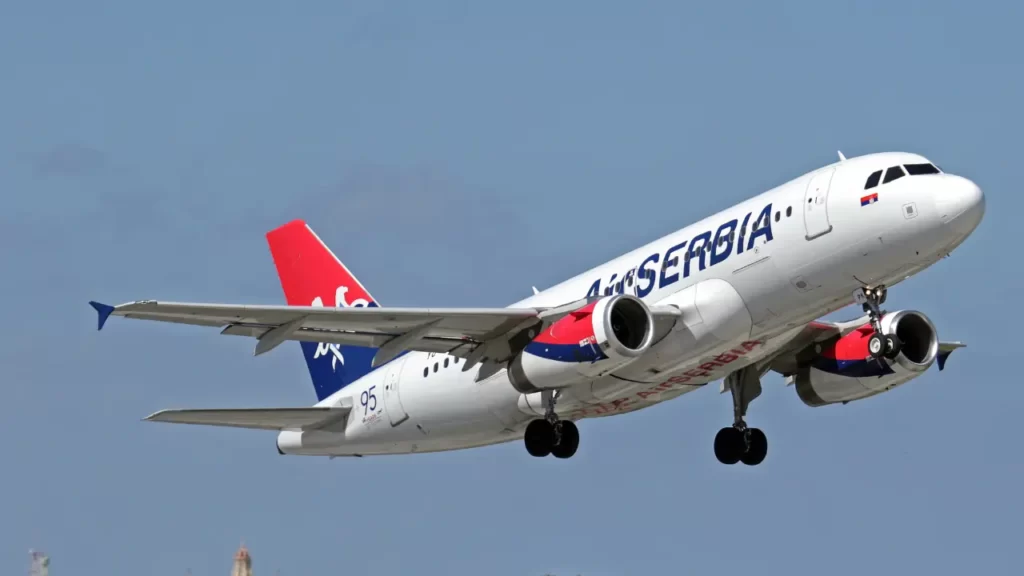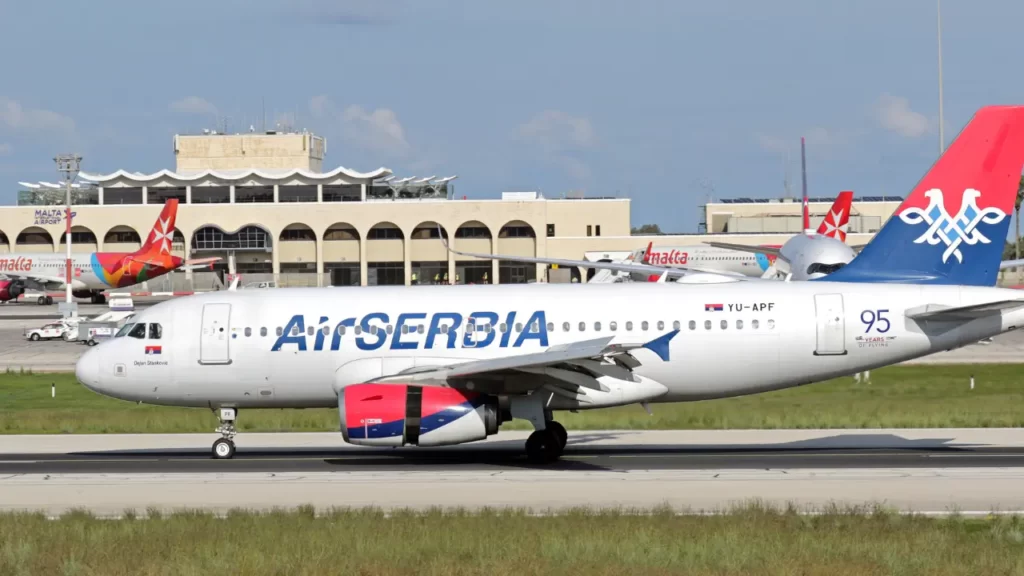
Air Serbia Overview
Air Serbia is the national flag carrier airline of Serbia. Here is an overview of Air Serbia.
Table of Contents
Founding and History
- Air Serbia was founded in 1927 as Aeroput, making it one of the oldest airlines in the world. It underwent various transformations over the years and was relaunched as Air Serbia in 2013, following a strategic partnership with Etihad Airways.
Hub and Base:
- The airline’s main hub is Belgrade Nikola Tesla Airport (BEG), which serves as its primary base for operations.
Fleet
- Air Serbia operates a fleet of modern and diverse aircraft, including Airbus A319, A320, and A330 models. The fleet is used for both short-haul and long-haul flights.
Route Network
- Air Serbia serves a comprehensive network of destinations, covering both European and long-haul routes. The airline connects Belgrade with numerous cities across Europe, the Middle East, and North America.
Services and Classes
- Air Serbia offers a range of services and cabin classes, including Economy Class and Business Class. Business Class passengers enjoy premium amenities, including enhanced seating, in-flight entertainment, and dining options.
Etihad Airways Partnership
- Air Serbia entered into a strategic partnership with Etihad Airways in 2013, with Etihad acquiring a minority stake in the airline. The partnership aimed to enhance Air Serbia’s operational capabilities and connectivity.
Loyalty Program
- The airline operates a frequent flyer program known as Etihad Guest, providing passengers with the opportunity to earn and redeem miles for travel and various other benefits.
Cargo Services
- In addition to passenger services, Air Serbia operates cargo services through its dedicated cargo division, Air Serbia Cargo.
Branding and Identity
- Air Serbia has adopted a distinctive branding and identity, including its livery, which reflects elements of Serbia’s national identity and heritage.
Modernization and Expansion
- Air Serbia has focused on modernizing its fleet and expanding its route network to strengthen its position in the global aviation market.
Impact of COVID-19
- Like many airlines worldwide, Air Serbia faced challenges due to the COVID-19 pandemic. The airline implemented safety measures, adjusted schedules, and navigated changes in passenger demand.
Air Serbia History

- Air Serbia has a rich history that spans several decades. The airline has undergone various transformations and developments. Here is an overview of key milestones in the history of Air Serbia:
Aeroput Era (1927-1948)
- Air Serbia traces its roots back to the establishment of Aeroput on June 17, 1927. Aeroput was the national airline of the Kingdom of Yugoslavia.
- During its early years, Aeroput operated as a pioneer in the aviation industry, connecting various European cities.
Post-World War II Period (1945-1990)
- After World War II and the establishment of the Socialist Federal Republic of Yugoslavia, the national airline underwent changes and was known as JAT (Jugoslovenski Aerotransport).
- JAT played a key role in connecting Yugoslavia with international destinations during the post-war period.
Breakup of Yugoslavia and Restructuring (1990s)
- With the breakup of Yugoslavia in the early 1990s, the aviation landscape in the region underwent significant changes.
- In 2003, JAT underwent restructuring and became Jat Airways, a move aimed at adapting to the evolving aviation environment.
Strategic Partnership with Etihad Airways (2013)
- In 2013, Air Serbia was officially launched as the national airline of Serbia, following a strategic partnership with Etihad Airways, the national airline of the United Arab Emirates.
- Etihad Airways acquired a 49% stake in Air Serbia, and the airline underwent a rebranding process.
Air Serbia Rebranding and Modernization:
- The rebranding of the airline included a new name, logo, livery, and a modernized fleet. The aim was to enhance the airline’s image and align it with international standards.
- Air Serbia introduced Airbus A319 and A320 aircraft to its fleet, focusing on modern and fuel-efficient planes.
Expansion of Route Network
- Under the strategic partnership with Etihad Airways, Air Serbia expanded its route network, adding new destinations and increasing frequencies on existing routes.
- The airline focused on connecting Belgrade with key cities in Europe, the Middle East, and North America.
Financial Challenges and Adjustments (2019 Onward)
- Air Serbia faced financial challenges, including economic downturns and the impact of the COVID-19 pandemic.
- The airline implemented cost-cutting measures, adjusted its operations, and sought ways to navigate the challenges faced by the global aviation industry.
Ongoing Operations and Adaptations
- Air Serbia continues to operate as the national flag carrier, providing passenger and cargo services. The airline adapts to market conditions, regulatory changes, and evolving travel trends.
